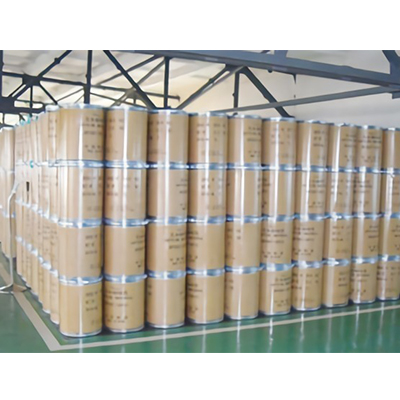- 0391-6109928
- 15302105619
- export01@zw-pvp.com
- Language:
Your Location:Home >Products >VP/VA Copolymers >25086-89-9


Appearance:White or creamy white,free-flowing power with characteristic smell,hygroscopic.Good solubility in water,alcohol and other organic solvents
pd_productuse:In view of it’s excellent adhesiveness ,film hard and other properties,Copovidone mainly used as water-soluble binder and dry binder in wet/direct granulation processes,also it can be used as film forming materials.
Purity:99%
|
Appearance
|
White to creamy white,free-flowing powder
|
|
K Value(Labled K value at 30)
|
27-32.4
|
|
Aldehyde
|
500 ppm max.
|
|
Peroxide
|
400 ppm max.
|
|
Hydrazine
|
1 ppm max.
|
|
Monomers(Residue VP+Residue VA)
|
0.1% max.
|
|
Impurity A(2-Pyrrolidone)
|
0.5% max.
|
|
Heavy Metals
|
20 ppm max.
|
|
Moisture
|
5.0% max.
|
|
Sulphated Ash
|
0.1% max.
|
|
VA content
|
35.3-42% max.
|
|
Nitrogen
|
7.0-8.0 %
|
Chemical Properties
white powder
Chemical Properties
Copovidone is a white to yellowish-white amorphous powder. It is typically spray-dried with a relatively fine particle size. It has a slight odor and a faint taste.
Uses
Poly(1-vinylpyrrolidone-co-vinyl acetate)
Uses
Copovidone is a water-soluble polymer used to improve the uptake and drug loading of various pharmaceutical agents, including contraceptive patches.
Production Methods
Copovidone is manufactured by free-radical polymerization of vinylpyrrolidone and vinyl acetate in a ratio of 6 : 4. The synthesis is conducted in an organic solvent owing to the insolubility of vinyl acetate in water.
General Description
~1:2.4 mole ratio of VP:VA
Pharmaceutical Applications
Copovidone is used as a tablet binder, a film-former, and as part of the matrix material used in controlled-release formulations. In tableting, copovidone can be used as a binder for direct compression and as a binder in wet granulation. Copovidone is often added to coating solutions as a film-forming agent. It provides good adhesion, elasticity, and hardness, and can be used as a moisture barrier.
Safety Profile
Moderately toxic by ingestion.Combustible, especially in powdered form. Incompatiblewith strong oxidising agents, strong reducing agents. Whenheated to decomposition it emits toxic vapors of NOx.
Safety
Copovidone is used widely in pharmaceutical formulations and is generally regarded as nontoxic. However, it is moderately toxic by ingestion, producing gastric disturbances. It has no irritating or sensitizing effects on the skin. A study was conducted to look at the carcinogenicity and chronic toxicity of copovidone (Kollidon VA 64) in Wistar rats and Beagle dogs. The results of these studies demonstrated the absence of any significant toxicological findings of high dietary levels of copodivone in rats and dogs, resulting in noobserved- adverse-effect levels of 2800 mg/kg body-weight/day in rats and 2500 mg/kg body-weight/day in dogs, the highest doses tested. LD50 (rat, oral): >0.63 g/kg
storage
Copovidone is stable and should be stored in a well-closed container in a cool, dry place.
Incompatibilities
Copovidone is compatible with most organic and inorganic pharmaceutical ingredients. When exposed to high water levels, copovidone may form molecular adducts with some materials; see Crospovidone and Povidone.
Regulatory Status
Copovidone is included in the FDA Inactive Ingredients Database (oral tablets, oral film-coated tablets, sustained action).
InChI:InChI=1/C6H9NO.C4H6O2/c1-2-7-5-3-4-6(7)8;1-3-6-4(2)5/h2H,1,3-5H2;3H,1H2,2H3
Jiaozuo Zhongwei Special Products Pharmaceutical Co.,Ltd,is a well-know and active PVP manufacturer in China with 6500mt/a capacity,who is focused on the PVP(Polyvinylpyrrolidone) R&D,manufacturing,marketing and service.our pharmaceutical grade Povidone K17,Povidone K30,Povidone K90 and Crospovidone, Our product lines span a broad range of PVP polymers,with this wide variety,the polymers can meet the needs of multiple industries and appilications.Most of our products are widely used in Pharmaceuticals,Cosmetics/Personal Care,Household,Beer/Wine/Beverage,adhesives,textile auxiliary,coatings,ink jet and other Hi-Tech industries. We are adopting to state-of- the-art polymerization technology in our process and morden management system.Main of our products including PVP Homopolymers range from K15 to K90,VP/VA compolymers,Croslinked PVP(Crospovidone,PVPP),Povidone Iodine(PVP-I),N-Vinylpyrrolidone(NVP),2-Pyrrolidone(2P) and other chemical products.